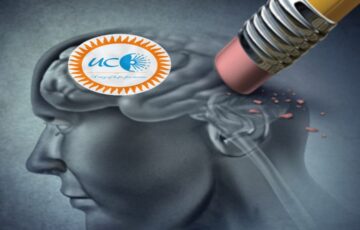Q. Virtual Reality and Augmented Reality (VR and AR) have massive innovation potential across a wide range of industries and research fields in India. Discuss.
Approach:
- Briefly explain about Virtual Reality (VR) and Augmented Reality (AR).
- Explain how they can impact human life by giving an account of their applications.
- Conclude accordingly.
Answer:
Virtual Reality (VR) is the use of computer technology to create a simulated environment where users are immersed and able to interact with the 3D world. It replaces the real world with simulated world. Augmented Reality (AR) is a live direct or indirect view of a physical, real-world environment whose elements are augmented or supplemented by computer-generated sensory input such as sound, video, graphics or GPS data.
The Indian Augmented Reality and Virtual Reality Market stood at USD1.83 billion in FY2020 and is forecasted to grow at a CAGR of 38.29% until FY2027. AR/ VR have a massive innovation potential in various industries and areas of research in India, such as:
Healthcare: Apart from increasing access of healthcare services to all through telemedicine, AR and VR can also help as:
- Medical personnel can be trained through these technologies to deal with wider variety of injuries and better learning of skills through visualization.
- Therapeutic role through application to exposure therapy, including phobia treatments.
Education: AR/VR applications can complement a standard curriculum. Text, graphics, video and audio can be superimposed into a student’s real time environment. For example, some edtech companies are using virtual reality to bring a new angle to experiential learning.
Defense: It can help in training of military personnel under a controlled environment where they are to respond to different types of combat situations and wide variety of terrains. Further, these technologies can help identify gaps and design strategies for specific situation that may arise in modern warfare.
E-commerce: AR and VR provide scope to e-retailers to develop strategies for delivering a digital experience and boost the overall business. For example, some e-commerce shopping companies have adopted AR to give customers a 360-degree experience.
Engineering: These enable engineers, management and investors to see virtual prototypes prior to physical prototypes which can bring vast improvements in various products such as automobiles etc.
Real-estate: Architects and Real Estate agents can use VR/AR to build designs and early identification of flaws in design.
Heritage sites to be recreated: Original sites are often inaccessible to the public due to the poor state of their preservation. AR/VR can be used to develop virtual replicas of caves, natural environments, old towns, monuments, sculptures and archaeological elements.
Navigation: AR can augment effectiveness of navigation devices. Information can be displayed on an automobile’s windshield indicating destination directions and meter, weather, terrain, road conditions and traffic information as well as alerts to potential hazards in their path.
Other areas: Urban planning and transportation projects through incorporated precision spatial information. Broadcasting live events like sports in 360-degree virtual reality.
However, presently the whole system of VR/AR is very expensive, which makes its access difficult for the poor. Also, the changing nature of technology makes it difficult for the elderly people. Prevailing the digital divide is also a limitation in access to these technologies.
Looking at the immense potential of AR/VR, the Government of India has established the Centre of Excellence for Virtual and Augmented Reality (VARCoE) at IIT-Bhubaneswar where major projects on AR&VR applications in various domains are in progress.





